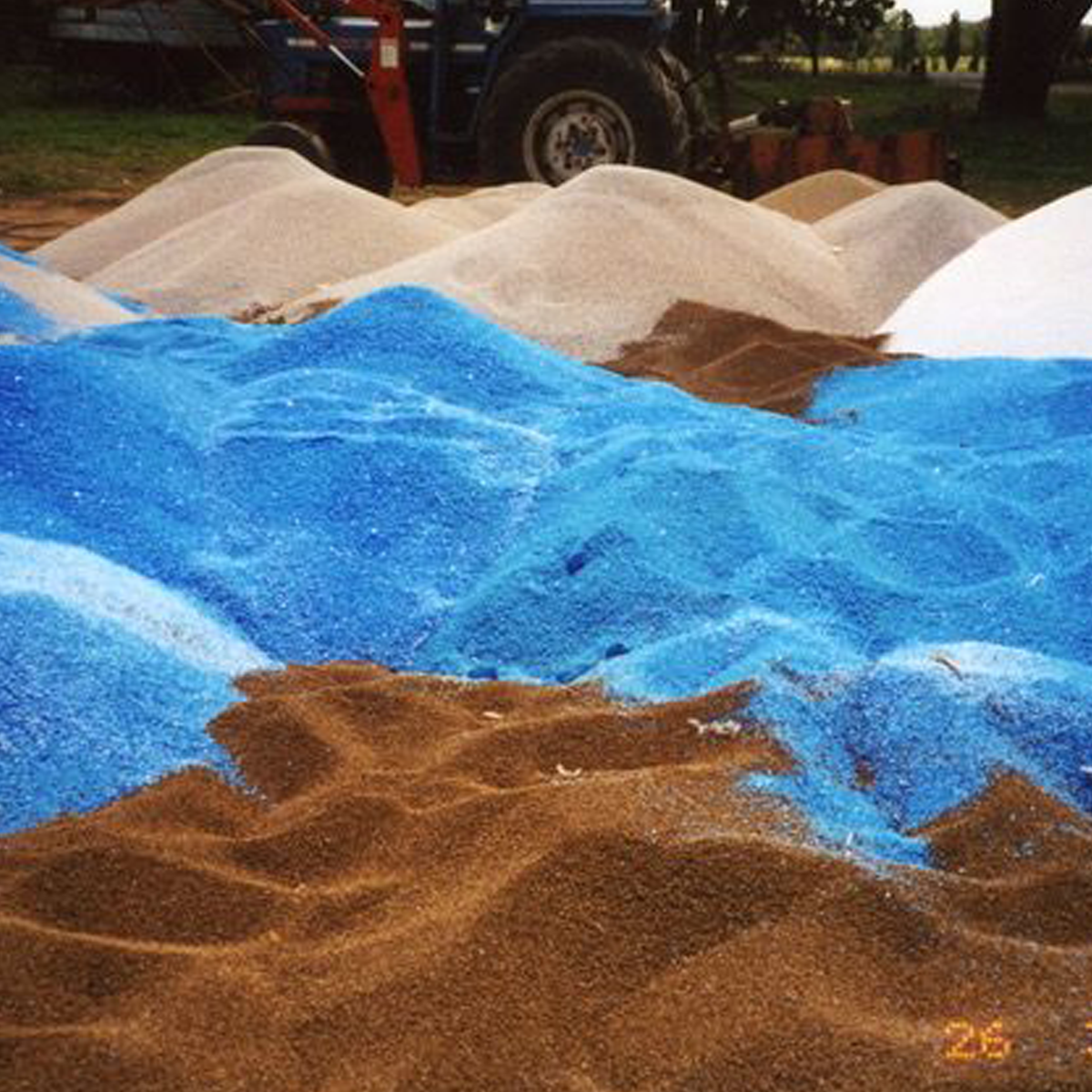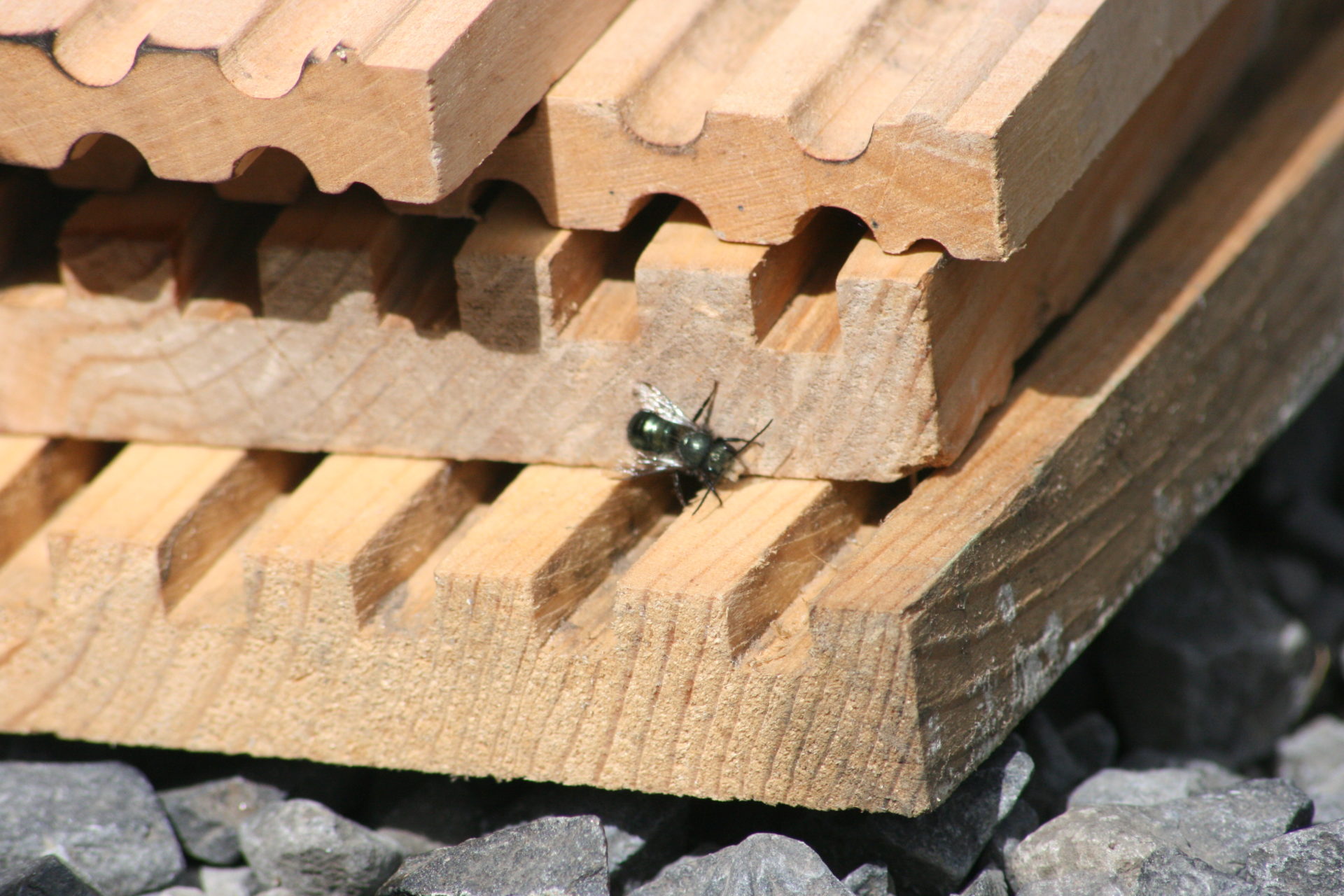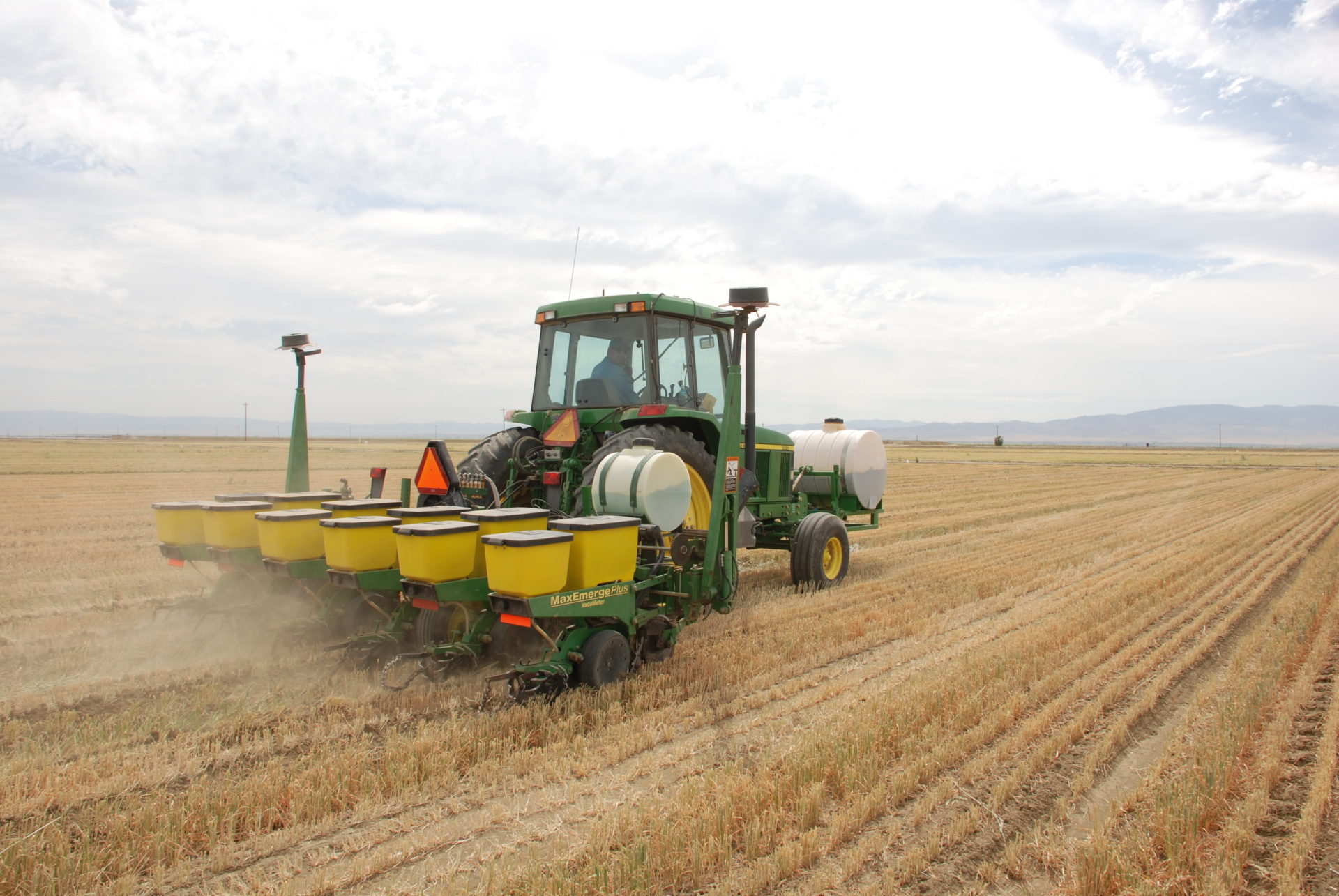
Trace elements, including zinc and several other micronutrients, have become a topic receiving much greater emphasis over the last few decades. These nutrients, though needed in much smaller amounts than the primary elements like nitrogen, phosphorous and potassium, are nevertheless essential for crop growth, soil and plant health, and for the production of nutrient-dense food and feedstuff.
One comparison that farmers and growers can appreciate is that trace elements in the soil function somewhat like spark plugs in a motor. Though only needed in small amounts, they are essential as catalysts or activators for many plant processes. They are necessary for top performance from any soil or plants being grown there.
The list of micronutrients considered as essential may vary depending on the crop and/or soil being considered. Those most generally included on soil tests are boron, iron, manganese, copper and zinc. Molybdenum (especially for legumes) and cobalt (especially for livestock and soil microorganisms) should also be considered where they could be deficient enough to cause problems, but the costs are such that for many growers, only key areas are initially tested and treated accordingly. Chlorides can also be tested for growers who may have a problem with salty water or salt deposits on their land. Some also test for silicon and selenium, but the levels and needs are not as well understood and defined for these elements as for those aforementioned above.
Zinc in Soil
Zinc is likely the most accepted and most often applied of all the trace elements. It is perhaps the least controversial micronutrient of all those mentioned above. Zinc is widely applied and considered as most necessary on crops like corn, rice and pecans. For example, adequate zinc is needed to determine the size of the ear (i.e. the number of kernels) of corn during the early growth stages (V4 and V5). But all crops respond well to zinc when it is correctly supplied.
The weight of the total amount of elemental zinc per acre found in the aerobic zone of the soil (which is the depth to which a wooden fence post rots, generally 6.5 to 7 inches deep) can be from 20 pounds to 600 pounds per acre. But most of that zinc is not in a form the plants growing can take up and utilize. Most of the zinc in the soil is “tied up” or “locked up” and unavailable to be taken up and used by the growing crop.
What needs to be determined is how much zinc is present in each soil in a form that is available for plant uptake and use. The total amount of zinc in all forms, whether available for plant use or not, can be determined by a soil test. But the determination most needed is the amount of zinc in the proper form for plants to take up and use which is considered as the amount of plant-available zinc in each soil. Of the total zinc contained in each soil, a minimum of 12 pounds per acre is needed to avoid zinc deficiency in a growing crop.
There are those who grow organically that may dismiss any need for adding zinc or other trace elements to the soil as they expect such materials will be provided by the use of compost or other natural methods. Zinc from compost and manures is useful, but that amount is seldom if ever enough to increase measurable levels in a zinc-deficient soil. Perhaps this is due to the bio-availability of zinc from composted materials which allows more immediate uptake by plants.
Using bone meal can increase measurable zinc levels in the soil over time. Growers who have applied large amounts of bone meal may have sufficient, or even excessive, levels of zinc in the soil. In fact, it can build the zinc levels too high when used in excess which then affects phosphate availability and, if high enough, it can hurt availability of other nutrients such as magnesium, manganese and copper as well.
But what happens when such is not the case and zinc levels are actually deficient in the soil? What difference does it make? And even if it does matter, how can growers know when the soil has too little, too much or just the right amount?
Deficiencies and Availability
Using soil tests is one method that can help evaluate whether zinc levels in the soil are adequate, but far too many who grow organically are just not sure whether to place their trust in such methods or not.
There is an old saying with which many organic growers can identify – “Study nature, not books!” So, perhaps looking at what happens in the field can provide some initial directions that can then be correlated back to what a detailed soil analysis can or perhaps cannot actually show in such cases. A better understanding about zinc and how to use it can help growers determine when whatever methods being used should be considered as sufficient or insufficient for supplying the needs of crops grown on that soil.
Zinc is one of the easiest trace elements to build. Even in soils that are extremely deficient it can be sufficiently applied to adequately reach required minimum levels for the very next crop. It is generally the most economical to correct and maintain of all those trace elements.
It is well-known that zinc is commonly lacking in plants grown in soils that have excessive phosphate levels. This is one of the first big hurdles that organic growers who use large amounts of compost must eventually face. Use of too much compost will at some time in the future ultimately result in too much available phosphate in the soil. Once that happens, zinc availability suffers. This can still be the case in soils with adequate to high or even excessive levels of zinc.
Too much phosphate in the soil can affect zinc availability to the point of reducing water uptake needed by the plants growing there. Zinc is essential for moisture absorption by plants. When soils have enough zinc for correct moisture absorption, they generally have enough zinc for performing the other needed functions in the crop as well.
Deficiencies tend to be greater in lower exchange capacity soils such as sands or very coarse clays. Deficiency symptoms are expected most in new growth. Smaller leaves or leaves that wilt very soon after watering for example indicate a possible serious need for zinc. An accurate soil test can be used to determine when zinc is needed and in what amounts.
Soil Needs and Testing
What level of zinc is needed in the soil? Always keep in mind that there are several different ways to test for, measure and report zinc levels for the soil, and most tests will read far lower than the figures from the testing that actually reflects the need for zinc on a pound for pound basis. So, do not try to universally apply the test numbers from one laboratory to other soil tests to determine if zinc is deficient or not. If so, you could wind up applying far more zinc than is needed to the soil.
On the other hand, there are soil tests that some soil laboratories use that consider zinc as adequate when tests that measure zinc needs on a pound for pound basis show as still too deficient. How do growers know which one is right? How can that be best determined? First judge by how crops respond and then by measuring what levels are needed in the soil to provide the proper response.
For best results, match phosphate and zinc needs for each different soil. On soils with very low phosphate levels, plant-available zinc measured as needed on a pound for pound basis should be at the minimum requirement of 12 pounds per acre or 6 ppm. When phosphate reaches excellent, zinc should be 20 pounds per acre or 10 ppm, and if excessive, then 40 pounds per acre or 20 ppm. Just remember, when phosphate is excessive enough so as to affect zinc availability, it will require more water to produce the same potential crop yield.
On the other hand, extremely excessive zinc can reduce phosphate availability and can cause other problems that may not always be as obvious as the actual example being shown here.
Figure 1 shows an example. The weed growing there is generally not that common in fields in the area. It is field pennycress that appears to have been planted right in the row where the corn was planted last year. The same weed is growing in the middles, but notice in the photo titled Figure 2 picture that it is not nearly as mature and vigorous as those growing in the old cornrows.
Samples of both the soil and the plants were taken in the rows and the middles. The plants growing in the row had extremely high concentrations of zinc. The same extreme zinc levels were also shown to be true for that soil. In fact, the rows had extremely excessive zinc levels right where the weeds were growing best, but out in the middles, the soil test showed zinc levels were quite deficient. The type of zinc used had built it up to excessive levels right under the row where it was applied but had no influence on levels even inches away.
This helps to illustrate what can happen when too much of any nutrient is applied to a soil directly under the seed. How much does it require before the availability of other nutrients (namely phosphate in regard to excessive zinc) starts to be reduced? Plants send their roots directly to the richest source of nutrients as fast as they can do so. This has been shown to be true not only for banded fertilizers but even for small clumps of manure or compost as well. These sources will quickly attract plant roots. Could this be why some farmers who band their zinc believe they need to add more phosphate when the soil test levels show to be far more than adequate for growing the crop?
Building up the availability of zinc in a soil can be accomplished with one broadcast application. The proper forms of zinc (some forms are soil feeders while others are only plant feeders) are quickly available and easy to build in a soil when those needs are correctly measured and the correct form is applied. Even in severe cases of deficiency, provided there is sufficient calcium there to get the zinc into the plant (a minimum of 60% base saturation on the test we use), zinc that has been taken up in sufficient amounts for the crop, even grass and trees, can make a difference in the plants growing there in three days.
One client who was growing turf grass reported that the grass just could not get enough water. Even though the soil was still wet from the previous irrigation, the grass would begin to wilt and only applying additional irrigation water would solve the problem. They had a severe zinc deficiency.
Based on the need shown by doing a soil test, the required amount of the correct form of zinc was applied as a broadcast application to sufficiently build up the level in the soil. The problem was solved in just three days! After that, normal irrigation was sufficient to grow excellent grass. The soil had everything else it needed, but the lack of supplying enough zinc was the problem.
The effectiveness of the various forms of zinc can be determined when the testing being done reflects the amount that is applied to the soil on a pound for pound basis. When this is the case, growers can soon see which products are most effective for use on the crops they are growing.
But too many forget that it takes two years to measure the full effects of a zinc application on any soil. The efficiency of zinc also depends on an adequate supply of calcium which is not accurately determined by the pH of the soil. Many soils have a “good” pH but lack calcium in sufficient amounts to take up zinc and other trace elements properly. The true determination of calcium needed is whether the soil in question has a base saturation of 60% calcium or higher. The lower the calcium saturation drops below 60%, the harder it is for plants to adequately respond, even when zinc levels are sufficient.
Zinc Sources
There are several different sources of zinc available for use by organic farmers. Those materials should first be divided into one of two classifications. Is the zinc being applied as a soil feeder or a plant feeder? If the form of zinc is a plant feeder, applying what should normally be considered as sufficient amounts to build up soil levels will not be successful. On the other hand, those forms of zinc that work as soil feeders should show zinc levels are being built on a pound for pound basis at the end of two years.
Rice is an excellent crop to use as a test to show the accuracy of a soil test and whether the zinc being used is a good soil feeder or only a plant feeder. When there is less than 12 pounds (6 ppm) per acre of zinc in a soil used for growing rice, the tips of the rice blades will begin to die. The problem is called “bronzing of the tip”, and on zinc-deficient fields it generally shows up by the time the first top-dress of nitrogen is needed by the rice crop.
If the soil test shows the soil has 6 pounds (3 ppm) of actual zinc, then it needs another 6 pounds to reach the minimum required 12 pounds per acre. This means the soil needs the equivalent of almost 17 pounds per acre of a standard 36% zinc sulfate to correct the problem via the soil.
There are other forms of zinc that cost less that can be applied and still eliminate this same problem in a rice crop. Farmers can apply the same amount of zinc using 36% zinc oxysulfate which costs less and solves the problem. An equivalent amount of foliar zinc chelate or even a plant extracted foliar zinc will do the same.
But all of these products that substitute for zinc sulfate are designed to be used as plant feeders. They supply just enough zinc to solve the problem, but the next time you grow rice there or if you grow rice there again the next year, you have to use the same amount again to solve the same old problem – year, after year, after year.
But a true zinc sulfate is a soil feeder. Supplying a sufficient amount of zinc to reach 12 pounds per acre just once when using it will solve the problem with only that one application for five to seven years before needing another maintenance application – generally about another 10 pounds per acre of 36% zinc sulfate. All soils need to at least maintain the 12 pounds of zinc per acre which is the actual minimum amount needed for all crops. Provided the soil has the minimum amount of needed phosphate and adequate calcium, the proper form of zinc will work there very well.
Just how important is it to maintain this minimum 12 pounds per acre level of zinc? Perhaps the response of soybeans to adequate zinc will prove to be a good example. When sufficient amounts of all the other nutrients are provided and zinc levels show to be 10 pounds (5 ppm) per acre rather than the required 12 (6 ppm), then supplying 10 pounds per acre of a true 36% zinc sulfate will increase the soybean yield by 10 bushels per acre. And if you use a true zinc sulfate (a soil feeder, not a plant feeder), that benefit will last about 5 to 7 years or even longer if you are using sufficient amounts of compost.
Once out of the aerobic zone, available zinc tends to decrease more and more as you probe deeper into that soil. Zinc, like phosphate, will always be most available in the aerobic zone. This is true unless the top soil in the field has been eroded away by wind or water, or when it has been removed and not put back where land has been graded or scraped for leveling. Another example is when the top soil is removed with the crop such as in harvesting turf grass.
All materials should be applied as a broadcast application that tend to help build up nutrient levels in the soil. For example, 36% zinc sulfate will increase zinc levels pound for pound when applied on the soil. Once applied it will remain there in the soil in an available form until utilized by the crop or the biological activity that supports crop growth. Such products are considered as soil feeders. They do not tie up easily once applied to the soil where proper treatment of the soil is practiced.
On the other hand, 36% zinc oxysulfate tends to be a plant feeder. When it is applied at the same rate as 36% zinc sulfate, much of the time the zinc level in the soil does not change at all. It is made by predominantly using a cheaper form of zinc, zinc oxide, in combination with a proportionately smaller amount of zinc sulfate. Some of these products do serve as soil feeders. It appears that when the zinc oxide is completely pulverized and then combined with zinc sulfate, it will help build zinc levels in the soil. If the product will build available zinc levels as measured by a reliable soil test on a pound for pound basis, then it is considered as a true soil feeder for building and maintaining needed zinc levels for soil and crop needs.
Effects of pH
There are far too many false concerns about the effects of high pH on zinc availability. It is true that as the pH of a soil goes up, the available zinc levels in that soil will be reduced accordingly. But the effects of the pH increase are only a concern for the zinc that is already there.
For example, on soils with a pH of 8.0, if the plant-available zinc is below the needed minimum of 12 pounds per acre, then applying an appropriate amount of 36% zinc sulfate will build the level of plant-available zinc right back to the prescribed amount. With a soil test that truly measures plant-available zinc and the use of a true zinc soil feeder fertilizer product such as 36% zinc sulfate, the levels will come right back to where they need to be in two years’ time. On high pH soils, it happens all the time.
If this does not work on a particular soil, there is generally a good common-sense reason as to why. First, was it truly a soil feeder form of zinc, or could it possibly have been a plant feeder form instead? Second, did the soil test used truly measure and express the zinc level on a pound for pound basis or is some other test being substituted to help make it “quicker and cheaper” to perform?
In addition, keep in mind that an excessive amount of phosphate can tie up available zinc in the soil. So can using extremely high rates of nitrogen or applying excessive amounts of manure or compost. The only way to know for sure is to find a test you can count on to measure what is actually there in the form needed to supply the crop.
On soils that receive limestone applications, the availability of micronutrients will be reduced. This is of greatest concern when the soil has borderline or deficient trace element levels. This includes zinc levels that do not remain above 12 pounds of plant-available zinc per acre once enough time has passed and the lime has had time to completely react with the other nutrients in that soil. This can require as much as three years to see the full effects on the nutrient levels in that soil, including plant-available zinc. If the field has borderline zinc levels and none is added, it may be the first, second or third crop before the zinc drops to a deficient level. The only way to know for sure is to monitor the plant-available zinc before each crop is grown.
This then should bring up one more consideration when it comes to assuring the soil in each field has enough zinc. Once you have a test that can measure and report what the zinc level should be, how often should you test that field to assure the zinc and everything that can affect it is still in order? Some will advise testing the soil every three or four years to “save money” – REALLY?
As one farmer stated after learning the value of using soil tests to maximize nutrient content and encourage better yields, “A soil test costs less than one small bale of hay per acre, and I can lose a lot more than that if just one nutrient is not properly supplied for growing the next crop.”
Start small, but prove it for yourself – you must, as most soil tests are used to sell you something, not teach you something.
For those who may be interested, boron is the next micronutrient to be discussed in this series of articles on trace elements and their usefulness for organic growth.
Neal Kinsey is the owner and President of Kinsey Agricultural Services. Please call 573 683-3880 or see www.kinseyag.com for more information.






